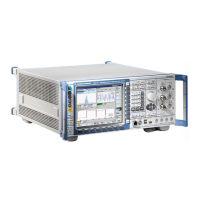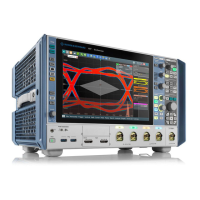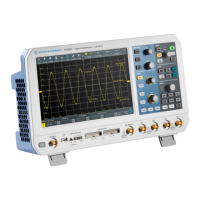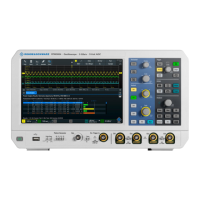Status Reporting System CMU
1100.4903.12 5.18 E-8
Overview of the Status Registers
Fig. 5-5 shows the status registers used in the CMU. The STATus:QUEStionable register is not used.
In addition to the standard STATus:OPERation register, the CMU offers 30 independent
STATus:OPERation:CMU:SUM1|2:CMU<nr> sub-registers (<nr>=1 ... 15).
Cascading registers
The hierarchical structure of the STATus:OPERation register was designed
with the aim of reporting and specifying the events generated during different
measurements independently. Each sub-register receives entries from a
particular combination of a function group and signalling mode (e.g. RF Non
Signalling, GSM900-MS Signalling etc.). The function groups and modes are
identified by means of their secondary address, an integer number between
0 and 29. Secondary address 0 is reserved for the CMU base system. The
remaining secondary addresses can be arbitrarily assigned or queried via the
SYSTem:REMote:ADDRess:SECondary command (see Chapter 6). The
assignment between sub-registers and secondary addresses is as follows:
Sub-register Secondary Address Sub-register Secondary Address
STAT:OPER:CMU:SUM1:CMU1
...
STAT:OPER:CMU:SUM1:CMU15
0 (reserved for CMU
base system)
...
14
STAT:OPER:CMU:SUM2:CMU1
...
STAT:OPER:CMU:SUM2:CMU15
15
...
29
Contents of the sub-
registers
The higher-level STATus:OPERation registers summarize the sub-registers
as shown in Fig. 5-5. E.g., if the corresponding ENABle bit is set, any EVENt
reported in one of the STATus:OPERation:CMU:SUM1|2:CMU<nr> sub-
registers sets the sum bit of the STATus:OPERation:CMU:SUM1|2 register
to 1.
This means that the STATus:OPERation register indicates whether any
event occurred, the lower-level STATus:OPERation:CMU:SUM1|2 registers
indicate the function group and signalling mode in which the event occurred,
the lowest-level STATus:OPERation:CMU:SUM1|2 registers indicate the
nature of the individual events.
The meaning of the bits in function group RF Non Signalling is given below
(see section STATus:OPERation Register 5.22). For other function groups
refer to the relevant manuals.
Accessing the
sub-registers
Every single status register can be configured and queried individually by
means of the commands of the STATus:OPERation subsystem (see Chap-
ter 6).
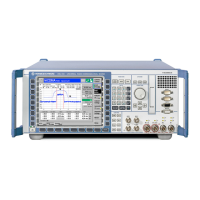
